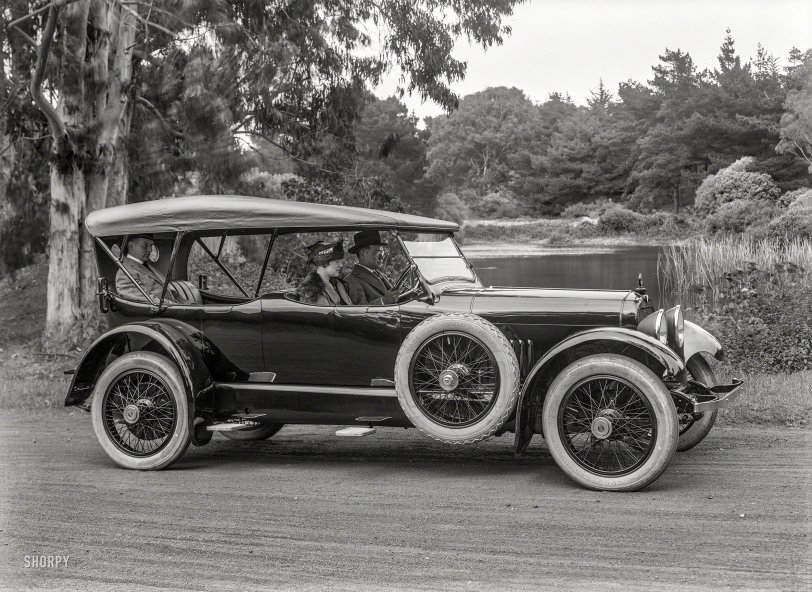


Framed or unframed, desk size to sofa size, printed by us in Arizona and Alabama since 2007. Explore now.
Shorpy is funded by you. Patreon contributors get an ad-free experience.
Learn more.

- Freeze Frame
- Texas Flyer wanted
- Just a Year Too Soon
- WWII -- Replacing men with women at the railroad crossing.
- Yes, Icing
- You kids drive me nuts!
- NOT An Easy Job
- I wonder
- Just add window boxes
- Icing Platform?
- Indiana Harbor Belt abides
- Freezing haze
- Corrections (for those who care)
- C&NW at Nelson
- Fallen Flags
- A dangerous job made worse
- Water Stop
- Passenger trains have right of way over freights?
- Coal
- Never ceases to amaze me.
- Still chuggin' (in model form)
- Great shot
- Westerly Breeze
- For the men, a trapeze
- Tickled
- Sense of loneliness ...
- 2 cents
- Charm City
- What an Outrage
- Brighton Park
Print Emporium
Sixth Wheel: 1919

"We always carry a spare, just in case."
San Francisco circa 1919. "Mercer touring car at Chain of Lakes, Golden Gate Park." 5x7 glass negative by Christopher Helin. View full size.
Another reason for no front brakes
Most cars of the time had worm and sector steering, which was essentially just a threaded rod that engaged a section of a gear. It worked and was very reliable, but made for a very 'heavy' feel to the steering. It's the reason for the huge steering wheels on older cars. A low tire, or any sort of added drag from braking etc would really make steering difficult.
My old 46 Willys had worm and sector, when I had to turn around I made sure I had room to roll while turning the wheel. (Or ask my passenger to lend a hand!) This later evolved into recirculating ball steering which was almost as much of an improvement as going from manual to power steering, It was used until the rack and pinion system made it to mainstream production.
No front brakes
Braking on the front wheels was thought to interfere with steering. The mechinism would have to apply the brakes evenly from side to side while the wheels moved up and down and left to right. By the late 20's it had been figured out. Ford stuck with a mechanical system until nearly WWll. Everyone else had gone hydraulic.
Gorgeous
That raked windshield and the lacy wheels, along with the step plates make this car stunning, a least to my eyes. The lack of running boards may make splashes worse, because I don't see much hope of sealing the lower edges of curtain on the rolled upper edge. Billy B got that one right. The small door openings are not a plus, either.
Oops no brakes
I find it interesting how so many cars of this period had no front brakes, this one included. It seems that no-one considered them important, whereas these days, the front brakes are far more important than the rear.
No Running Boards
It seems the extra long fenders would preclude road debris or spray to reach window level especially since the roads of the time would have made high-speed driving difficult at best.
That's different
I don't think I've ever seen this style of car without running boards. Just a step by each door. Would the lack of running boards allow more road spray to come in the open windows?
Also the driver looks really "up on the wheel" (in racing lingo). Looks almost uncomfortable to drive. I don't think a much bigger man would fit behind the wheel.
























On Shorpy:
Today’s Top 5